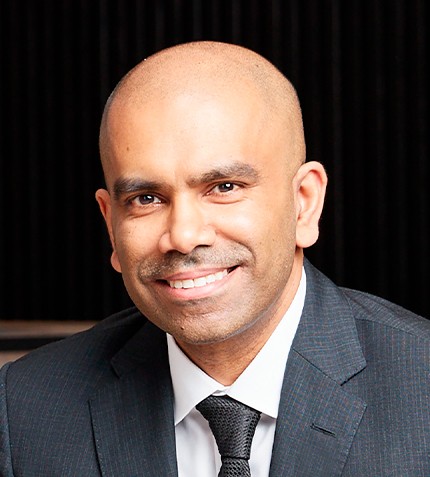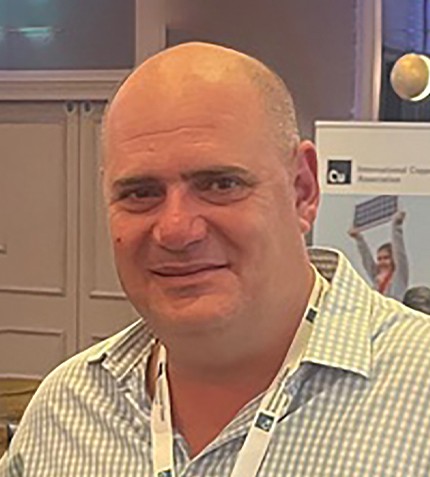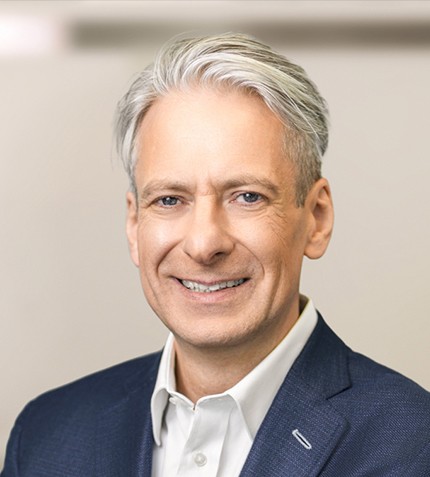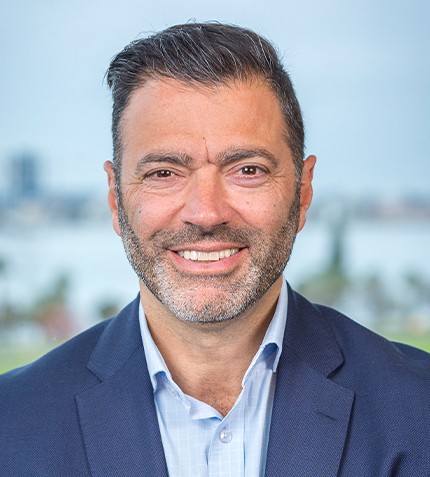
"In the past, ESG may have been emphasized more heavily compared to economics, but today we see the two dimensions balancing out."
Reuben Joseph
PRESIDENT, APAC/AFRICA, AUSENCO
Could you provide an overview of Ausenco’s work, performance, and recent developments in Africa over the past year?
We’ve had a strong year in Africa, and our team has grown significantly, so we expect to close the year on a high note, with momentum heading into 2026. Ausenco is engaged by juniors, mid-tiers and majors across all project stages, from early scoping studies to full project execution, and we are well-positioned to continue this growth in the year ahead.
It’s exciting to see that the projects we are currently supporting in Namibia and Morocco are progressing through detailed engineering and entering the execution phase. We are also working with several juniors in East Africa, specifically in Kenya and Tanzania, helping to get their projects off the ground. In addition, we are pursuing several new projects for both studies and EPCM work across West and East Africa. Gold and copper continue to represent a large part of our revenue, especially from majors executing large projects, but we are also working more in uranium, phosphate, graphite, and rare earth elements (REEs).
While we see plenty of activity at the project definition stage, especially scoping and feasibility studies, the leap to a final investment decision (FID) is taking longer. Naturally, the step from studies to implementation is typically the most challenging due to funding, permitting, and other pressures. We’re seeing companies willing to invest in defining their projects, moving into detailed design and even placing long-lead equipment orders, yet hesitate to commit to full FID.
Some reports suggest that boardroom momentum for sustainability has slowed. How central is ESG to advancing a project?
I’d say that even when ESG is not vocalized or highly visible, the underlying principles remain essential, both for company executives and externally for regulators, communities, and stakeholders. It’s also worth remembering that ESG is not limited to non-financial aspects but can directly impact project economics. A strong ESG approach, particularly in areas like fit-for-purpose design, water management or tailings design, can drive efficiency, lower OpEx or CapEx, and enhance sustainability credibility. The key is to marry the technical aspects of a project with the regulatory and social dimensions. In the past, ESG may have been emphasized more heavily compared to economics, but today we see the two dimensions balancing out.
What is your advice for avoiding “Excel economics” when building a business case, especially for projects that risk oversized CapEx in the chase for metrics?
We see it all the time, especially when the grade of a project is low and you need volume to make the project financially viable. At Ausenco, we offer in-house financial modelling to determine the optimal size and scope of a project, ensuring it can realistically be funded given the company’s market cap, commodity, location, and broader market conditions. All these aspects and more will drive the decision around project size. It’s not just about chasing the highest NPV or IRR in Excel, it’s about what the market will realistically fund, so you need to find that sweet spot.
One effective strategy is to build flexibility and scalability into a project. Instead of starting with a large plant that requires significant upfront capital, begin with a smaller, more affordable plant that can be expanded later. Once the project is generating revenue and cash flow, financing future expansions becomes much easier.
From a processing perspective, are there any innovative technologies that Ausenco has been implementing?
Ausenco implemented the first coarse particle flotation (CPF) circuit nearly 10 years ago, and we’ve since delivered many more across the globe. Currently, we are working with our clients to study and install CPF into existing circuits to deliver a step change in plant performance and economics. Unlike traditional flotation technologies, CPF targets coarser particles meaning grind size can be increased, leading to higher mill throughput or reduced energy consumption, in some cases by up to 30%. We typically also see lower water consumption and a different waste profile which opens up further novel technologies around tailings deposition. The technology has allowed projects that might not have been viable to become feasible and has improved the economics and ESG profile of existing operations.










